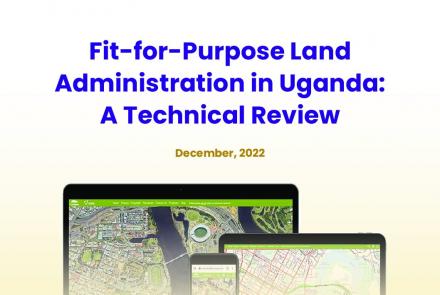Promoting gender sensitivity and awareness in Uganda
“Power, knowledge and agency: It is important to bring the complex interrelations of power, knowledge and agency to bear on the analysis of gender relations and struggles” Ritu Verma 2001
To increase the security of property rights for women, cultural, legal, institutional and cultural issues must be addressed in tandem or evolve jointly, with reference to the broader social and economic environment within which land rights are embedded. On the legal side, the definition of property rights to land and the way in which people can acquire them must be clear and equitable and, perhaps most importantly, they must hold relevance for the people who are supposed to adhere to them. On the institutional side, procedures need to be formulated, institutions need to be accessible and services should be provided effectively and at low cost. On the cultural side, there is a lot of historical context to take into account in order to explain why there is this underlying asset disparity between men and women. All this implies that beyond the formulated general principles, practical implementation of any measures to increase the security of tenure has to start with in-depth field analysis of the current situation. If the administrative infrastructure is thin and resources are scarce, then the actors who are supposed to be enforcing these laws—in both the customary and statutory realms—will not be equipped or knowledgeable enough to do so. This might imply a significant role and support for local communities.
Land administration and justice systems are fundamental for the protection of people’s land rights. However in countries like Uganda, they have serious gaps, as well as contradictory, discriminatory and gender biased laws and practices. These affect people’s claims to land particularly those marginalized ones like women and youth. Still, in daily practice, there are numerous examples of women seeking justice particularly regarding their right to land, often with the help of intermediary organizations. Uganda is a particular example where a resilient and solid civil society engages in research and advocacy, working for the rights of women to achieve justice and equity in land rights. Through the activities of the Women’s Land Rights Movement in Uganda, support has been provided to women on access to justice.
Secure rights to land for women is not the norm, neither is it the norm for women to participate in governance or in public matters; thus for women’s rights to be secure, and for their voices to be heard in decisions that have an impact on their lives, both women and men must change how they view women's rights, roles and responsibilities with regard to land and resources
Over the years, women’s voices have come out clearly during implementation of land rights interventions but very few of these have been documented and shared widely. Apart from the reports, newsletters and radio talk shows where these voices are captured, a lot is lost due to lack of a systematic arrangement for making them readily available and accessible to stakeholders. The formats in which the voices are captured also limit distribution to a wider audience.
Since its establishment, WLRM has worked with women in five districts to promote awareness of women’s land rights. At least 250 women have been trained and organized into groups to cascade the WLR messages to grassroots women in sub counties and empower them to acquire land. Formation of groups is still ongoing. As women get organized, their voices are expected to become more coherent and inspiring to a wider audience, hence the need to capture and share them widely to influence more stakeholders and the general public in favour of their cause.
Strategic Objective 5: By 2022, Women’s Land Rights Movement will have enhanced the women’s rights to land through the promotion of justice and equity in land administration and dispute resolution systems in Uganda
Outcome:
- A strong Women’s movement advocating for the rights of women on land in Uganda
Key activities
- Unpacking root causes of women’s land rights failures Learning from and improving CSOs interventions at different levels of engagement towards securing women’s land rights.
- Enhancing the collaboration within the Women’s Land Rights Movement on joint programming on land rights and gender.
- Strengthen the voice of civil society organizations (particularly the women’s Land Rights Movement) working on women’s land rights in Uganda.
Strategic Objective 6: By 2022, LANDnet will have documented women’s voices as an advocacy tool for increased security of tenure for women.
Outcome:
- Increased awareness of and debate on women’s land rights in Uganda from community to international levels.
- Increased awareness levels are expected to result into fundamental cognitive, behavioral, cultural and social transformations in the medium and long term.
Key activities
- Attracting young professionals to document women’s land rights through various media
- Training women’s groups in carrying and disseminating key messages on gender and land
- Training women’s groups in beingwomen’s land rights champions in the village barazas
- Conducting field interviews and filming videos
- Taking photographs
- Producing posters, banners and newsletters
- Writing stories of change
- Producing newspaper articles or supplements
- Developing a dedicated interactive page on women’s Land rights
- Electronic and physical filing of documents and outputs
Strategic Objective 7: By 2022 LANDnet will have increased its capacity to work on the women land rights agenda on the long term.
Outcome:
A well trained and capacitated staff ably delivering women’s land rights programs.
LANDnet’s systems of accountability strengthened and efficiently supporting programming on women’s land rights.
Key activities
- Capacity development of LANDnet staff on gender analysis, mainstreaming and land governance
- Recruitment of additional qualified staff as need arises
- Attracting young professionals to work on the women’s land rights agenda
- Maintaining and developing new partnerships and MoUs with strategic partners working on women’s land rights.
- Financial and management systems continuously audited and improved.





